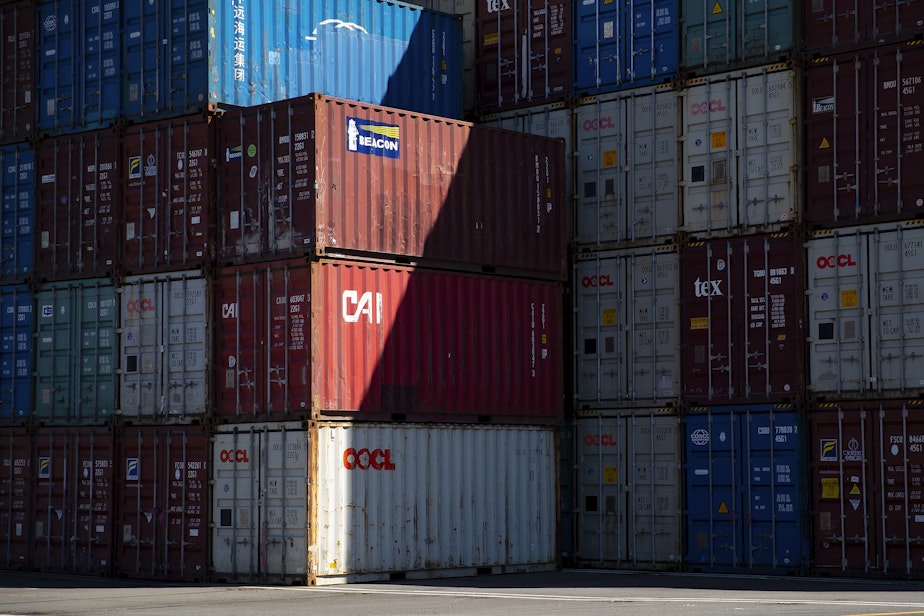'Big beautiful bill' not so pretty for Port of Seattle's carbon reduction goals

The elimination of clean energy credits as part of President Donald Trump's newly enacted "big beautiful bill" could hamper the Port of Seattle’s goal to become "the greenest port in North America."
The port is in the midst of a clean energy program to achieve net-zero greenhouse gas emissions for port-owned operations by 2040 and carbon neutrality port-wide by 2050.
RELATED: How would federal funding cuts impact Seattle's budget? Mayor Bruce Harrell explains
But that plan relies on clean energy credits for converting its fleet vehicles to renewable and alternative fuels and for making its commercial buildings more energy efficient. Those credits are either severely restricted or eliminated in Trump’s policy bill.
"The passage of this bill makes the local fight against climate change harder, not easier," Port of Seattle Commission President Toshiko Hasegawa said in a prepared statement. "The Port of Seattle has made bold commitments to advance our mission of promoting a thriving economy, healthy environment, and equitable communities. We aim to deliver on our triple bottom line by becoming the greenest port in North America — and the clean energy credits targeted for elimination have been essential to that goal."
RELATED: Tariffs are paused. Will the ports of Seattle, Tacoma rebound?
The new federal policy also rescinds funding from the Environmental Protection Agency that the port planned to use to convert heavy-duty vehicles from diesel to cleaner fuels.

"In addition to the devastating impacts it will have on working families, by removing incentives for electrification and clean fuels for trucks, ships, and planes, the big bill is beyond bad for the Port's and the nation's ability to combat climate change and create jobs of the future," Port of Seattle Commissioner Fred Felleman said in a statement.
The reduction in federal support comes less than three months after the port unveiled the Seattle Waterfront Clean Energy Strategy, "a shared roadmap to electrify the Seattle waterfront, putting in place the clean, reliable energy needed to enable the maritime industry’s transition away from fossil fuels," according to the port's announcement.
At the center of the strategy is the electrification of buildings, vehicles, vessels, and equipment on port-owned properties.
The plan calls for hundreds of millions of dollars in upgrades of electrical infrastructure to allow for oceangoing vessels to utilize "shore power" while in port.
Sponsored

Hasegawa said the Port remains committed to its clean energy goals, despite the sudden elimination of federal support in its transition away from fossil fuels.
"While this setback is deeply disappointing, we remain steadfast in our commitments," she said. "Our work continues — because our communities, workers, and future generations depend on it."




